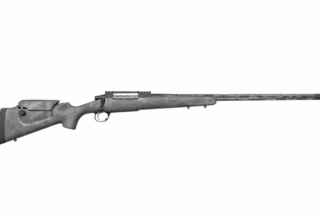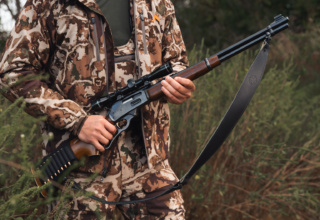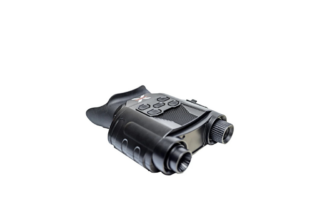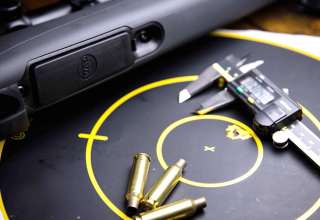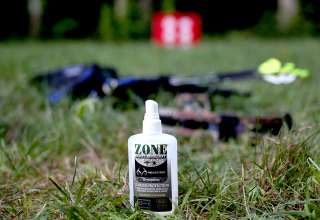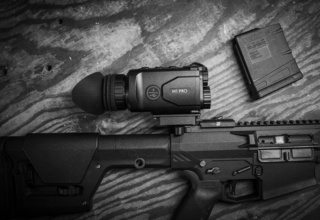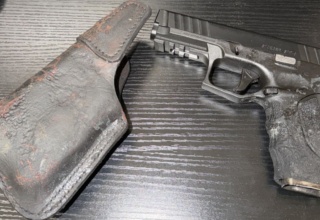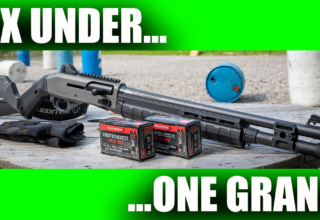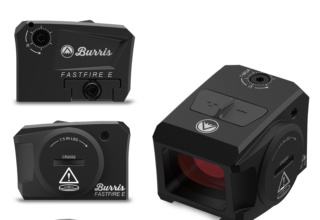A long debate among archers has been waged ever since the first mechanical broadhead hit the market over twenty five years ago. It is true that experiments with mechanical heads date as far back as the mid 1950’s. Nevertheless, it wasn’t until the late 1970’s and early 1980’s that you began to see mechanical broadheads being taken somewhat seriously in the archery industry. If you paid attention at all, you have heard every reason why one is better than the other. “Mechanical heads fly better” or “fixed blades are more reliable.” Parties in each camp are dedicated to their position. In truth, any broadhead that makes a clean hole through the vitals of a game animal will kill them. It wasn’t so long ago that stone tips did all of the work. Still, the debate as to which is more efficient is better understood in context.
 Fixed blades, whether it is cut on contact, or tipped broadheads have long been heralded as the best choice for what is considered ‘thin skinned’ game such as whitetail deer, antelope and the like. The ability for the broadhead to begin its damage instantly upon contact is seen by many to be an advantage over mechanical heads that have to deploy as they are entering the animal. With today’s fast and accurate bows, in the proper hands of a skilled archer, there can be little difference noticed. But there are differences that should be considered when making the choice.
Fixed blades, whether it is cut on contact, or tipped broadheads have long been heralded as the best choice for what is considered ‘thin skinned’ game such as whitetail deer, antelope and the like. The ability for the broadhead to begin its damage instantly upon contact is seen by many to be an advantage over mechanical heads that have to deploy as they are entering the animal. With today’s fast and accurate bows, in the proper hands of a skilled archer, there can be little difference noticed. But there are differences that should be considered when making the choice.
Only a few years ago short and lightweight arrows were the answer to a lot of concerns. I remember vividly shooting a bow with a four inch overdraw and launching twenty four inch arrows from my twenty eight inch draw length. Those tiny Easton XX75 aluminum arrows flew fast but had little energy when they arrived. I seldom had pass through shots on deer. As we have learned more, we now understand that a longer heavier arrow is more beneficial.
The next big thing was extra-large wound channels. Broadheads with two inch blades and bigger were hitting the market to attract hunters. Hunters became enamored with large holes and massive blood trails. Will a two inch hole kill faster than a hole half the size? Not necessarily. Does it leave a bigger blood trail? It does if you have an exit hole. But the larger cutting surface limits the percentage of pass through shots. This cause concern particularly when shooting from a treestand. A lighter arrow shooting a large cutting mechanical head does not have the same effectiveness as a heavy arrow with a smaller fixed head. Ralph Cianciarulo of Archer’s Choice Media puts it this way, “decrease cutting surface, increase penetration.”
 The advent of the small-diameter arrows helps. When the arrow creates virtually zero drag through the wound channel it allows the head to do its job. Match a small diameter Beman ICS Precision Hunter or ICS Whiteout arrow with a Thunderhead Nitro from New Archery Products and you have one of the best hunting combinations available. In tandem, this allows the broadhead to carry more kinetic energy to, and through, the animal. The Thunderhead Nitro is the perfect broadhead for fixed blade shooters who demand extreme accuracy and ruggedness. With a 1-1/16” cutting width, it is designed to take down the biggest game animals around. The Thunderhead Nitro is manufactured in the USA and designed for both the fastest and most powerful bows and crossbows available.
The advent of the small-diameter arrows helps. When the arrow creates virtually zero drag through the wound channel it allows the head to do its job. Match a small diameter Beman ICS Precision Hunter or ICS Whiteout arrow with a Thunderhead Nitro from New Archery Products and you have one of the best hunting combinations available. In tandem, this allows the broadhead to carry more kinetic energy to, and through, the animal. The Thunderhead Nitro is the perfect broadhead for fixed blade shooters who demand extreme accuracy and ruggedness. With a 1-1/16” cutting width, it is designed to take down the biggest game animals around. The Thunderhead Nitro is manufactured in the USA and designed for both the fastest and most powerful bows and crossbows available.
Tuning the fixed blade head does take a little extra time. But mechanicals do not fly as true as field points either and both need tuning in your bow. Sadly, most casual hunters do not take the time to tune mechanical broadheads. They assume the mechanical head will fly just like their target points. This is never the case! All broadheads should be tuned. Whether you are shooting mechanical or fixed. You need to practice with your broadheads as much as possible to ensure it is as accurate as possible.
Deciding which is best for you is more of a personal choice and what flies best in your setup. There really is no right or wrong answer. You need the broadhead that flies best for you. Having said this, personally, I would always opt for the smaller head in a heavier arrow. This will ensure your deer dies (when hit in the correct location) quickly and humanely. The Thunderhead Nitro from New Archery Products is one of the best-selling fixed blade heads available today and my choice for deer. Whether it is one of the Spitfire options, Killzone or the Bloodrunner, they are all great options if you decide on mechanical.


